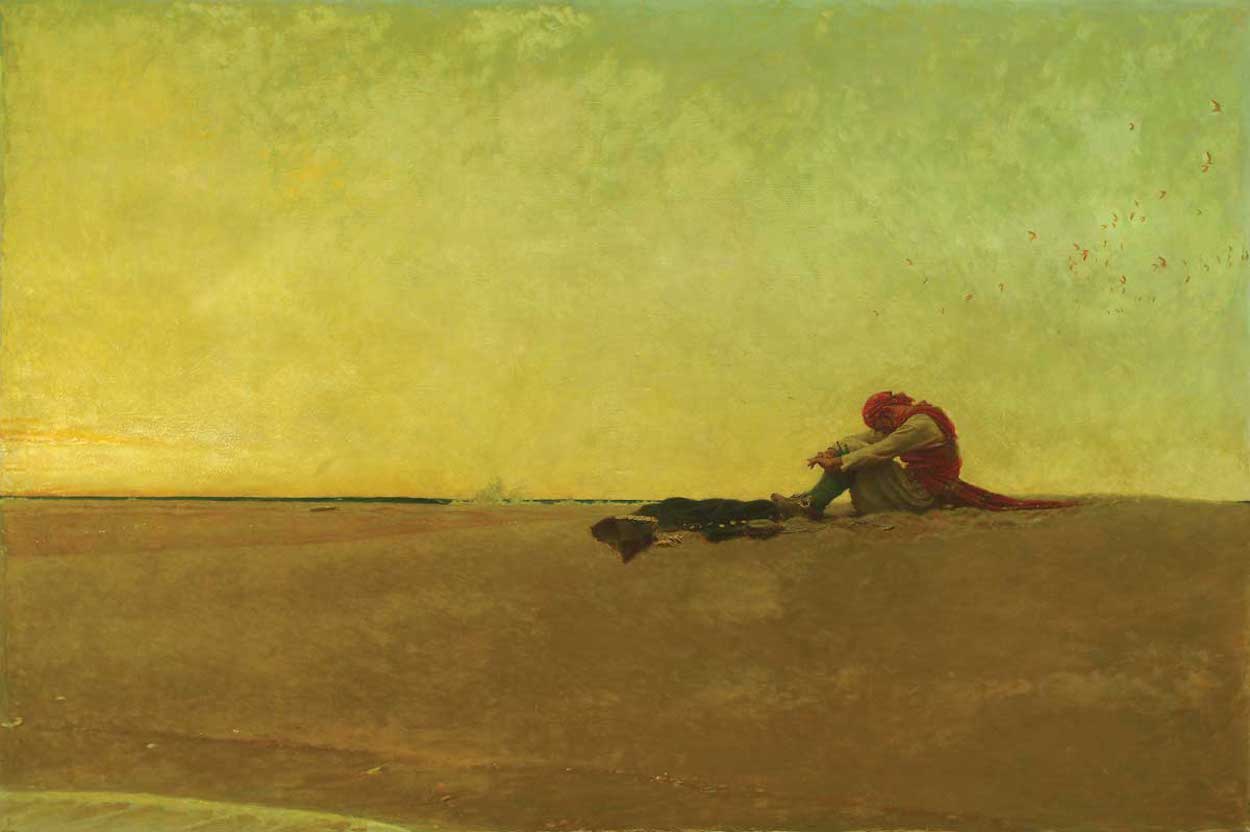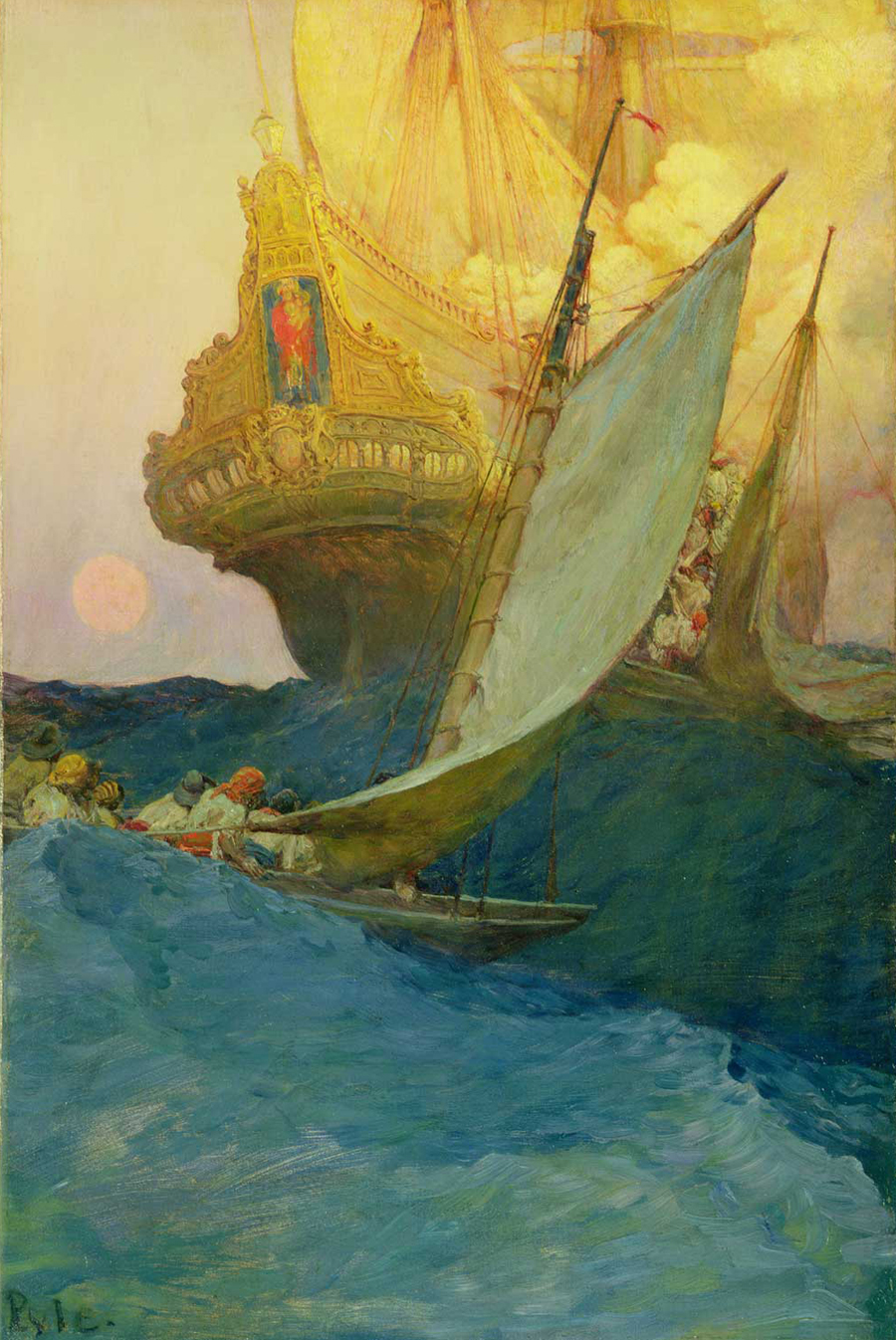This deceptively simple painting speaks volumes. A pirate has been marooned, left on an isolated sandbar with neither food nor water, only a pistol should he choose to end his life before succumbing to the elements or madness. The entire backdrop of the painting, the vast sky and sand, is rendered in shades of yellow underscoring the scorching heat from which there is no escape. In its starkness, this expansive horizontal composition with a diminutive figure placed asymmetrically on the horizon line, exquisitely captures desolation, hopelessness, and human suffering.
In the world of fine art, illustrators have often been neglected as the proverbial red-headed stepchild. Yet, ironically, their contributions have frequently been more far-reaching and impactful than those of critically-acclaimed artists. Howard Pyle, regarded as the "Father of American Illustration", was active during the Golden Age of Illustration, a period from the 1880s through WWI of unprecedented growth and excellence in illustration as a result of technological advances in printing techniques and the public's ravenous desire for graphic art. By age 25, Pyle was already a successful and sought-after commercial illustrator. Eventually he began teaching illustration and opened his own art school in Delaware, culling students from around the country. His criteria: imagination first, artistic ability second. A dynamic teacher, he instilled in his students a passion for conveying a story: “You have caught a moment in some [characters'] lives, but there have been moments before and some will come after, -- feel as if you could tell their past history and their future”. Pyle staged elaborate sets and was known for scouring local antique stores for costumes and props. And he often depicted characters from an angled perspective, a novel technique, which gave a heightened sense of movement and drama.
Many of Pyle's pupils became famous artists and illustrators including N.C. Wyeth, Frank Schoonover, Violet Oakley, and Jessie Willcox Smith. Besides publishing over 3,300 illustrations, Pyle wrote and illustrated 200 texts including books on Robin Hood and King Arthur. However, his greatest legacy is arguably in the realm of pirates. He invented the present day image of the pirate: part 16th century sailor, part Spanish gypsy, exotic and dangerous. From the 1930s to the present day, all pirate movies have to some extent been influenced by the contributions of Howard Pyle.
- Martina Keogan


 Howard Pyle
Howard Pyle